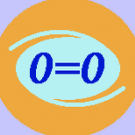-
Posts
18362 -
Joined
-
Last visited
-
Days Won
105
studiot last won the day on February 17
studiot had the most liked content!
Profile Information
-
Location
Somerset, England
-
Favorite Area of Science
applications of physical sciences
-
Occupation
Retired Technical Consultant
Recent Profile Visitors
The recent visitors block is disabled and is not being shown to other users.
studiot's Achievements

SuperNerd (12/13)
3k
Reputation
-
studiot started following Lapis Lazuli: Blue For an Unexpected Reason , Window air conditioner, reversed. , Optimizing Solenoid Design and 1 other
-
Here is the rating plate on my heat pump. Note it is not the window or protable variety. The cooling mode has about 10% less capacity than the heating mode.
-

Gap between life and non-life (split from What if god...)
studiot replied to Khanzhoren's topic in Biology
One point I keep making that only swansont seems to appreciate concerns 'precursors'. Most replies seem to assume there is only one 'precursor', which is of course, impossible for building more complex molecules. But not only do we need at least two precursors and reactions, all the evidence suggests that we need a whole chain of them. The important point is that we do not know the length or composition of that chain. These fact pose immense difficulties in estimating overall probabilities and Ken's efforts are far too simplistic. For instance the reaction that produces precursor A may occur in one galaxy and the reaction that produces precursor B may occur in another or at a time beyond the lifetime of the A molecule. And the new AB molecule must have a lifetime long enough to participate in the next reaction for the next stage. The treatment of the volume over which the concentration is calculated is important. So selecting nice concentrations and reactions rates is unviable. If I were asked to suggest a calculation scheme I would suggest assigning partial probabilities to each stage of a probability tree and considering the consequences of 1, 2, 3, 4 ....n stages. This approach is taken in engineering Limit State Analysis and Design and that is complicated enough; the reaction pathway to life almost certainly has many more stages. -
If you are going to put it or them into a card then you need to increase the turns not by the usual linear lineup of one alongside the other but in a flat spiral fashion. In order to mechanically couple this to the effort use a mechanical membrane, rather than a central push rod.
-

Mass and curvature (split from Question about matter and space-time)
studiot replied to Dejan1981's topic in Relativity
Glad you are back and had the time to compose that excellent explanatory post. +1 -

Gap between life and non-life (split from What if god...)
studiot replied to Khanzhoren's topic in Biology
Ken I am not getting at you, indeed some of my comments were directed at this statement from CharonY I call your and everyone elses' attention to the following paper, desccribed by Prof Benton as "One of the msot daring papers ever published .... yet one of the msot influential papers of the 20th century" Extra Terrestrial Cause for the Cretaceous - Tertiary Extinction. Nature 6th June 1980 Alvarez , Alvarez, Asaro and Michel. It introduced the famous iridium spike and a formula for the geological effects of meteorite impact. My point is that we just do not have enough information to calculate probabilities so readily. Which is why I offered something we can calculate and swansont kindly amplified. As regards meteor impact there exist very serious barriers to the idea that these relatively delicate 'precursors' arrived by meteorite. Do you have a recipe book by the way ? Meteorites are known to have enough energy to melt and even boil rocks, by the impact, so what would impact do to precursors ? -

Gap between life and non-life (split from What if god...)
studiot replied to Khanzhoren's topic in Biology
Ken you also need to consider temperature. At the temp of space (say 3o) or at the more comfortable temperature of an Earthlike planet (say 300o) or at the temperature of a hydrothermal vent (400o to 450o). The Arrhenius equation is very relevant here. -
The point about equations is that it does not matter which way round you write them. If A = B then B = A Most of the laws of Physics are of this form so if Time is involved it does not matter whether time goes forward or backwards, the equations still hold. There is one major law of Physics called the second law of thermodynamics which doe not have the form of an equality (or equation), it is an inequality so If A < B then going the other way B is greater than A. Since the second law involves time it cannot be reversed and hold the same form like an equation.
-

Gap between life and non-life (split from What if god...)
studiot replied to Khanzhoren's topic in Biology
You were very clear, but just plain wrong. It is very far from clear to me. You are just not understanding what you are being told, perhaps that is why you have not responded to my previous post. Let us take a much simpler example of chemical kinetics that we can calculate. The chemical reaction between two of the commonest molecules in the universe. Consider a cluster of hydrogen gas. We can calculate the minimum size required for this to ignite as a fusion reaction, forming a star, or the for the time we would have to wait to expect such an ignition to happen. But we do not have the necessary information to do this the the many times more complicated series of reaction that are necessary for life to occur. -

Gap between life and non-life (split from What if god...)
studiot replied to Khanzhoren's topic in Biology
I understand from this claim that you did not actually understand my explanation at all or you would not have said Because in a laboratory you would have control over the concentrations. What I also meant was we do not know what concentrations to control. That follows directly from my description of chemical kinetics. -

Gap between life and non-life (split from What if god...)
studiot replied to Khanzhoren's topic in Biology
Do you really think this is a sensible question ? We do not have a recipe book for life of any description. So let us say I show you a large opaque black bottle and say this black bottle has grains of sand in it. How many grains doe it contain ? You may not examine the bottle or know how big the sand grains are. That is a far far easier task. -

Gap between life and non-life (split from What if god...)
studiot replied to Khanzhoren's topic in Biology
OK so Chem K is based upon the idea of estimating the chances of two molecules, say A and B meeting to create the reaction. That is called a simple reaction. In general, The greater chance the faster the reaction. The chances increase with concentration of the molecules A and B. They decrease with the requirement that three (or more) molecules need to meet to further the reaction. Now, as @genady says, at astronomical volumes the concentrations are minute (concentration being the number of reacting molecules in a given volume) There is a further complication. That is that many, if not most, reactions are actually what is called multistep, not simple. Each step has to occur in the correct order within the correct timescale (ie before something else happens to the reactants) for the final products to emerge. Now remembering that all probabilities are less than 1 and that these probabilities are multiplied together you should be able to see that this will result in a very very small number of successful reactions. The trick, of course, is estimating these probabilities. -

Lapis Lazuli: Blue For an Unexpected Reason
studiot replied to exchemist's topic in Inorganic Chemistry
The classification depends upon where, and in which country, you look as well as the date of the classification scheme. All very confused. I think the sulphur comes from pyrites. https://www.nicholaswylde.com/content/lapis-lazuli/ This discussion below is interesting. https://www.mindat.org/mesg-326838.html Meanwhile here is some scanned material that I promised. First, Wells Then here is some well presented wider information from Latimer and Hildebrand Reference Book of Inorganic Chemistry -

Gap between life and non-life (split from What if god...)
studiot replied to Khanzhoren's topic in Biology
What do you know about chemical kinetics ? The answer lies therein. -
I see that vague questions receive vague answers - suprise suprise. I a I also see that specific answers to very specific questions do not even receive acknowledgement.
-

Lapis Lazuli: Blue For an Unexpected Reason
studiot replied to exchemist's topic in Inorganic Chemistry
Interesting subject +1 It is important to distinguish between the gemstone lapis lazuli, lazulite and lazurite minerals, all of which are blue stones. https://minds.wisconsin.edu/bitstream/handle/1793/11597/Lazulite.pdf?sequence=1&isAllowed=y Since my return I have also dug out my 3rd ed of Wells (1962) which has some things to say about this. I cannot trace a later edition. I willpost what he has to say when i can.














